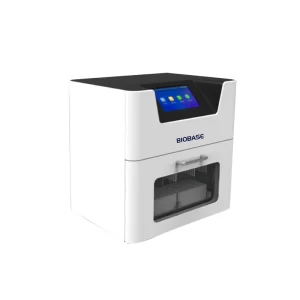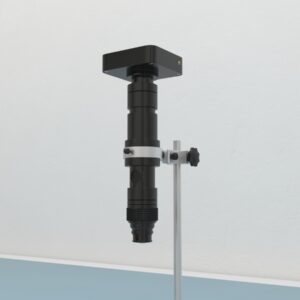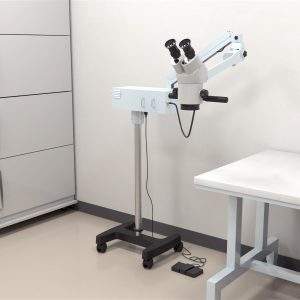$0.00 – $7,300.00Price range: $0.00 through $7,300.00
This Tissue Processor Series provides efficient and reliable automated tissue processing for consistent histology results. The RD-500 ensures dependable, high-capacity operation, while the RD-501 enhances productivity with vacuum dehydration and dual-basket processing for faster turnaround.
With a carousel design, intuitive programming, and advanced safety features, these processors deliver uniform reagent penetration and superior sample protection. Ideal for pathology, research, and clinical laboratories requiring precision, speed, and reproducibility.

Conduct Science is a premier manufacturer of research infrastructure, born from a mission to standardize the laboratory ecosystem. We combine industrial-grade precision with a scientist-led tech-transfer model, ensuring that every instrument we build solves a real-world experimental challenge. We replace "home-brew" setups with validated tools ranging from microsurgical suites to pathology systems. With a track record of >1,600 institutional partners and hundreds of citations, our equipment is engineered to minimize human error. We help you secure more data for less of your budget, delivering the reliability required for high-impact publication.



Carousel Design: Uses a rotating sample basket to ensure thorough mixing and reagent penetration.
High-Capacity Processing: Can process up to 200 cassettes with the optional double basket configuration.
User-Friendly Interface: Features 10 built-in programming options and a simple control panel for easy operation.
Enhanced Safety: Equipped with both software and mechanical limiters to prevent equipment damage, along with an obstacle sensor.
Power-Off Protection: The system resumes operation from memory after a power failure, protecting samples.
Flexible Start Times: Allows for a delayed start time of up to 30 days.
Vacuum Dehydration: Accelerates reagent exchange and dehydration, significantly reducing processing time for small specimens.
Dual Baskets: Comes standard with a two-basket system for increased throughput and high-volume processing.
Gas Filtration: Includes a built-in filtration system to remove harmful fumes during vacuum cycles, improving lab safety.
Fast Processing: Can complete the processing of small tissues in as little as 3 hours.
Carousel Design: Features a rotating sample basket for uniform reagent exposure.
Programmable Operation: Offers 10 built-in programs and options for manual control and delayed start.
Safety Features: Equipped with software and mechanical limiters, an obstacle sensor, and power-off protection to safeguard samples and the device.

Tissue processing is a foundational step in histology, essential for preserving tissue morphology and enabling accurate microscopic analysis. Traditional manual methods are time-consuming, prone to variability, and expose personnel to hazardous reagents. Automated tissue processors address these challenges by standardizing the processing workflow, ensuring reproducibility, and improving laboratory safety. The RD-500 and RD-501 models offer advanced capabilities for automated tissue preparation, designed to meet the demands of modern scientific research and diagnostic laboratories. These systems facilitate rapid and consistent processing, crucial for studies ranging from basic research to preclinical drug development and pathology.
The principle of our automated tissue processors revolves around the precise and sequential exchange of reagents to prepare tissue samples for embedding. Samples are held in baskets within a rotating carousel, moving through a series of stations containing different reagents and paraffin.
Dehydration: Tissues are progressively dehydrated by immersion in increasing concentrations of alcohol (e.g., ethanol), which removes water.
Clearing: Alcohol is then replaced by a clearing agent (e.g., xylene), which renders the tissue translucent and miscible with paraffin.
Paraffin Infiltration: Finally, tissues are infiltrated with molten paraffin wax, replacing the clearing agent and providing structural support for sectioning.
The carousel design ensures continuous agitation and thorough reagent penetration, while programmable sequences allow for optimized processing protocols. The RD-501 model further enhances this process with vacuum dehydration, accelerating reagent exchange and reducing overall processing times, especially beneficial for smaller or delicate tissue samples. Transparent reagent cylinders allow for visual monitoring, and integrated safety features protect both samples and operators.
Operating the automated tissue processors involves a systematic approach to ensure optimal sample preparation. A general protocol includes the following steps:
Sample Loading: Place fixed tissue cassettes into the designated sample baskets. For the RD-501, utilize its dual basket capacity if processing a larger batch.
Reagent Preparation: Ensure all reagent cylinders are filled with the appropriate concentrations of alcohol, clearing agents, and molten paraffin wax according to the established protocol. The transparent cylinders facilitate easy level checks.
Program Selection: Select an appropriate pre-set program from the 10 available options or create a custom protocol based on tissue type, size, and desired processing time. The RD-501’s vacuum dehydration feature can be integrated into custom protocols for accelerated processing.
Delayed Start (Optional): If required, utilize the delayed start function (up to 30 days) to initiate processing at a specific time.
Operation Initiation: Start the processing cycle. The system will automatically move the samples through the various reagent stations, ensuring proper agitation and incubation times. The obstacle sensor and safety limiters will prevent operational mishaps.
Monitoring: Periodically monitor the process through the transparent cylinders. The 5-second pause at reagent cylinder changes helps prevent spills.
Unloading: Once the cycle is complete, carefully remove the processed tissue cassettes, which are now ready for embedding. In case of power interruption, the power-off protection ensures the cycle resumes from memory.
Automation & Efficiency: Significantly reduces hands-on time and streamlines the tissue processing workflow, allowing laboratory personnel to focus on other tasks.
Consistency & Reproducibility: Automated control over reagent exchange, temperature, and timing minimizes human error, leading to more uniform and reliable results compared to manual methods.
Throughput: Capable of processing a large number of samples simultaneously (50-200 cassettes depending on basket configuration), ideal for high-volume laboratories. The RD-501’s dual baskets further enhance this.
Accelerated Processing: The RD-501 model, with its vacuum dehydration feature, offers significantly faster processing times for certain tissue types, crucial for rapid diagnostics or research.
Safety Features: Incorporates multiple safety measures, including obstacle detection, spill prevention, and power-off protection, enhancing user safety and sample integrity.
Flexibility: Offers multiple pre-set programs and allows for custom protocol creation, accommodating a wide range of tissue types and research needs.
User-Friendly Design: Features like transparent reagent cylinders and intuitive controls simplify operation and monitoring.
Initial Investment: The upfront cost of automated tissue processors can be substantial compared to manual methods.
Maintenance: Requires regular cleaning and maintenance to ensure optimal performance and longevity.
Reagent Consumption: While efficient, they still require a consistent supply of various reagents, which can contribute to ongoing operational costs.
Sample Size Sensitivity: While adaptable, very large or extremely dense tissue samples may require protocol optimization or extended processing times.
Learning Curve: Although user-friendly, initial training is necessary for operators to fully utilize all features and troubleshoot minor issues effectively.
Bancroft, J. D., & Gamble, M. (2008). Theory and Practice of Histological Techniques. Elsevier Health Sciences.
D’Amico, F., et al. (2018). The value of rapid tissue processing in surgical pathology: a prospective study. Journal of Clinical Pathology, 71(11), 1011-1016.
Fisher, J. R. (2015). Automated tissue processing and the advantages of vacuum infiltration. Biotechnic & Histochemistry, 90(5), 365-371.
Shi, S. R., et al. (2017). A novel approach to tissue processing for molecular pathology: the impact of an automated tissue processor on nucleic acid quality. Histopathology, 71(6), 942-951.
Vaidya, H., et al. (2019). Optimization of tissue processing protocols for rapid turnaround time in a high-volume surgical pathology laboratory. Annals of Diagnostic Pathology, 43,
| Weight | 6.61 lbs |
|---|---|
| Dimensions | 34 × 25 × 20 cm |
| Model | Standard, Advanced |
You must be logged in to post a review.
There are no questions yet. Be the first to ask a question about this product.
Reviews
There are no reviews yet.